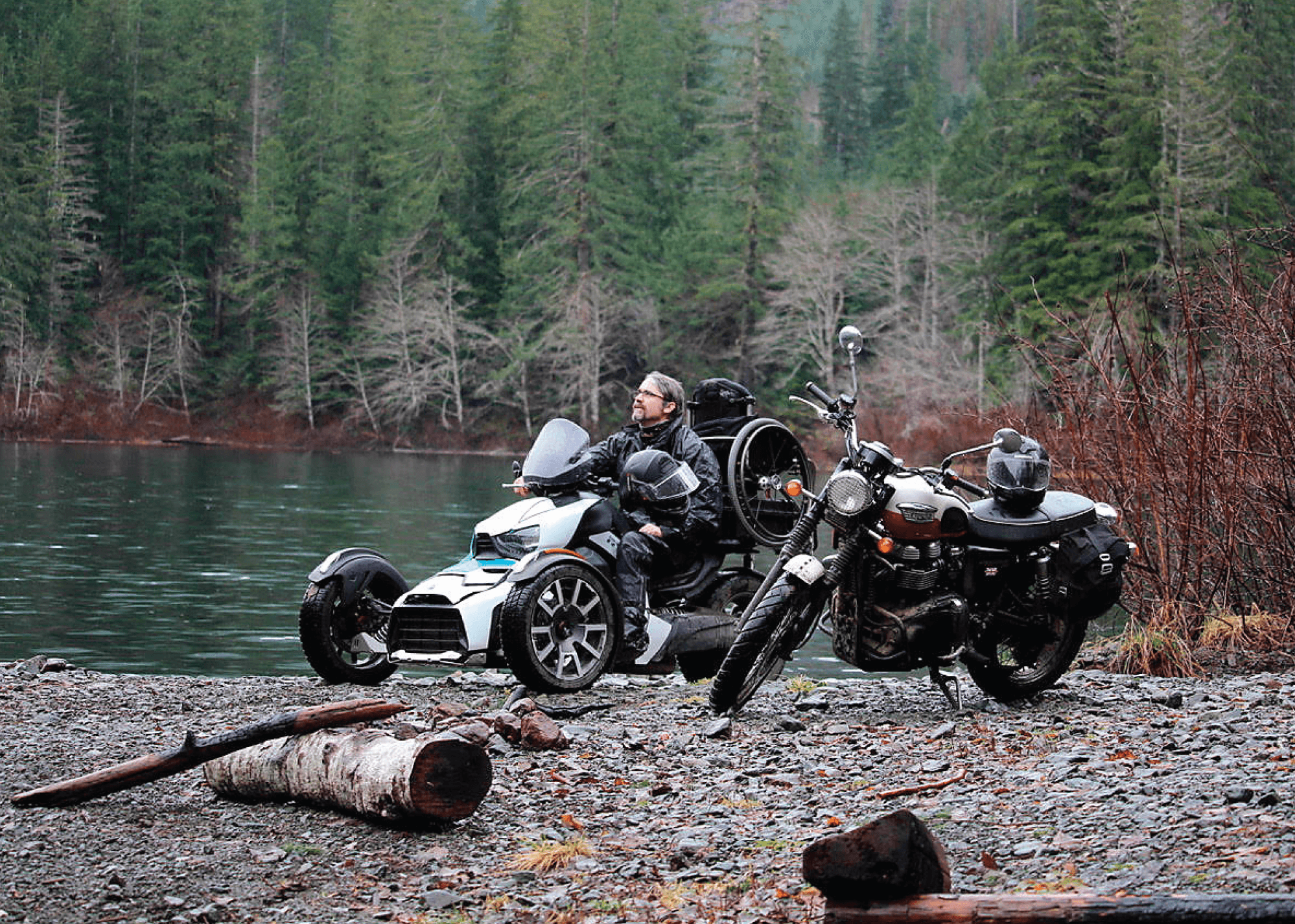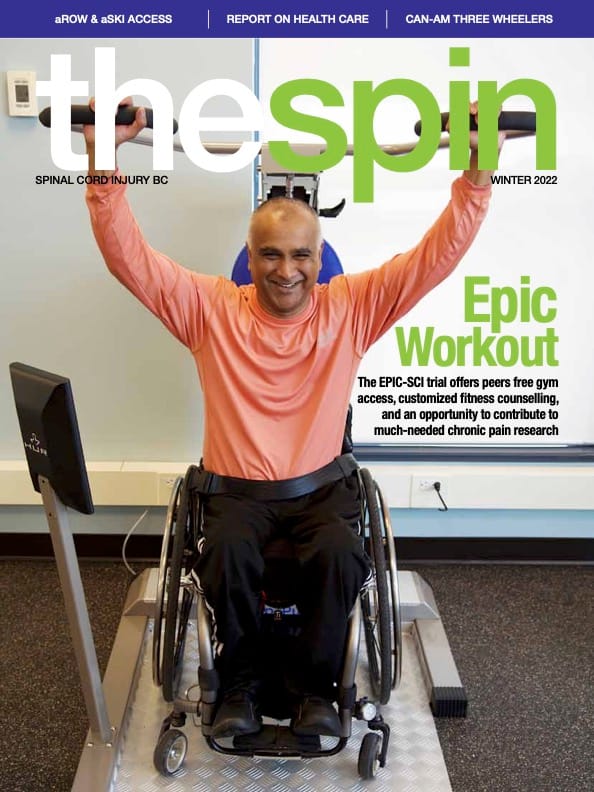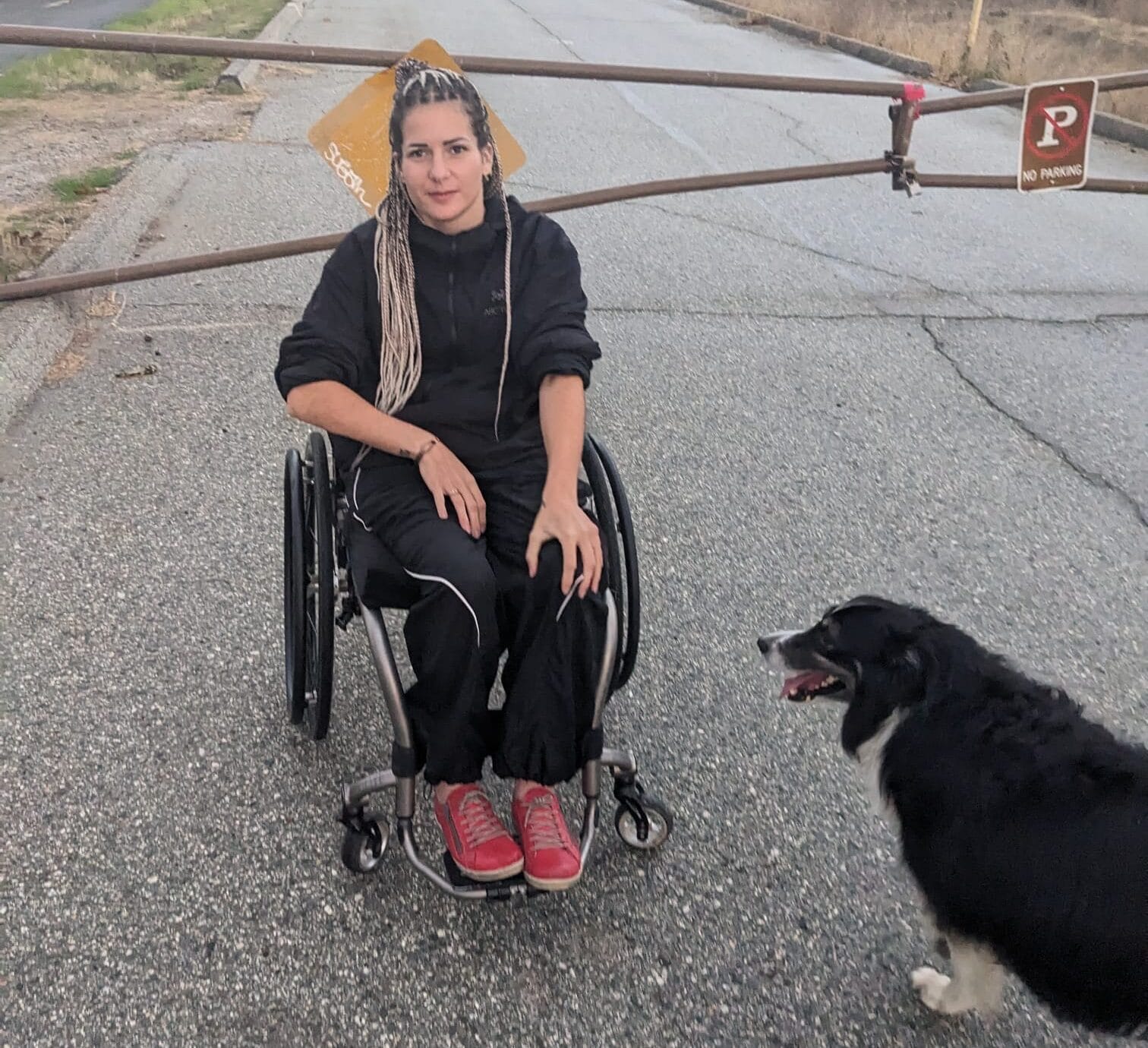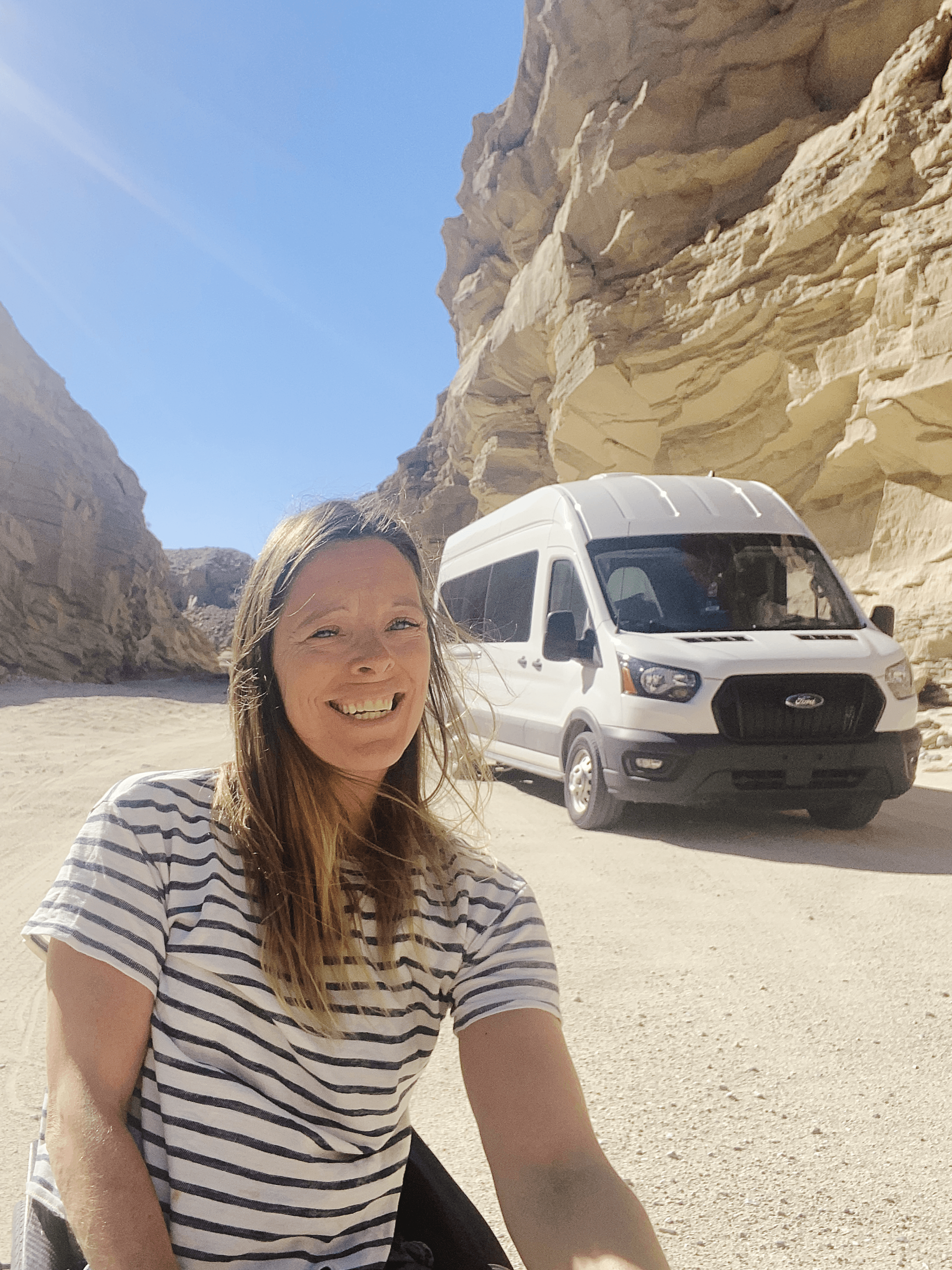
During this time of the year, winter can really start to lose its allure, and you can’t blame any Canadian for dreaming of warmer weather. For Simon Harrington, when his mind wanders to thoughts of spring, it’s all about being on the open road on one of his Can-Am three wheelers.
The Can-Am Spyder first came on the scene back in 2007. With its single rear drive wheel and two front wheels for steering, it was immediately hailed as revolutionary. It almost seemed like a snowmobile designed for the road, with wheels instead of skis and track. That’s not surprising, given its pedigree— Can-Am is a division of Bombardier Recreational Products, a spin-off of Bombardier Inc., the Quebec company that is globally recognized as being the inventor of the snowmobile (company founder Joseph-Arman Bombardier debuted the first snowmobile in 1935).
It didn’t take long for wheelchair users with a penchant for speed and tinkering to see the potential for the Spyder to be modified and provide a way to get into—or back into—motorcycling. Its three-wheeled stance offered great stability, and its reverse gear, anti-lock brakes, and traction and stability control provided reassurances of safety.
In the 15 years that have since elapsed, scores of wheelchair users across North America and around the globe have embraced the Spyder.
We don’t know how many Spyder riders with disabilities there are, but a quick online search will turn up hundreds of thousands of hits—images, videos, group postings, and more.
Harrington, who lives in Courtenay on Vancouver Island, joined the ranks of enthusiasts in 2016.
Now 56, Harrington sustained a T12 incomplete injury while skiing in 1989. When he learned about the Spyder, he saw it as a way to rekindle an old passion.
“I got my first motorcycle when I was about 21 years old, just a year or two before my accident,” says Harrington, who recently retired from a career with Worksafe BC. “I rode down to California with a bunch of friends on bikes. That was an amazing adventure. I still remember riding over the Golden Gate Bridge in San Francisco, feeling like I was in Easy Rider.”

After he was injured, Harrington initially put motorcycling on the back burner. But as the years went by, he found himself dreaming of motorcycling again. In 2016, he decided to scratch the itch. He first considered the Ural, a Russian motorcycle and sidecar combination, but with its manual transmission, the modifications it would require presented a challenge. That’s when he made the decision to go with the Can-Am Spyder. “With the Can-Am, changing gears was already done with an electronic hand trigger shifter, so only the braking system had to be modified,” he says. “I found a company in the USA that had developed a hand controlled braking system for the Spyder. This was a relatively easy do-it-yourself install. The system works excellent, providing normal braking power.” Before he could enjoy his new bike, he had to have the adapted brake system approved by ICBC.
“Essentially,” he explains, “once the modification has been completed, the vehicle needs to be inspected at a designated inspection facility to confirm a passed inspection. The vehicle is then registered as a modified vehicle with ICBC.” With his inspection completed, Harrington still had to jump through another hurdle—getting his class 6 driver’s license, which was revoked after his injury, along with his standard class 5 license.
“The process consists of a motorcycle knowledge test and a skills test. The knowledge test is done at the driver’s licensing office. Most of the questions pertain to general driving knowledge and rules of the road; however, there are questions that relate specifically to motorcycles. Once the knowledge test is passed, you’re able to practice riding with a supervisor— this could be someone in a car who has a class 5, or a fellow motorcyclist with a valid class 6—at a 60km/hr speed limit.” After two weeks of practice, Harrington was allowed to take the skills test. “This is a two part test,” he says. “The first part is done in a parking lot and is to ensure you can control the bike at low speeds. The second part is a road test. The examiner follows behind in a car. You communicate with the instructor by a headset intercom system. All in all, I didn’t find getting my license difficult.”
He adds that ICBC’s Learn to Ride Smart and Tuning Up for Riders guides provide riders of all abilities with all the knowledge they need to successfully pass the licensing process. With license in wallet, Harrington was finally able to start enjoying his Spyder. “Getting back to riding on the bike was great,” he says. “The best part was that I was able to join my friend, who is an avid motorcyclist, to go for rides together. Riding a motorcycle is so different than riding in an enclosed car—I suppose it’s the ‘openness’ of it.”

Soon, Harrington was going on longer and longer rides. “The Spyder is like a Cadillac,” he says. “It loves the open highway, has a great sound system, and heated hand grips, which are a must for those chillier riding days. In 2019, I rode the Spyder to Winnipeg and back. I camped along the way. I carried all my camping gear, clothing, and food on the bike.”
He was having so much fun on the Spyder that, when Can-Am came out with a new three wheeler in 2019, he couldn’t resist. “Of course, ask any motorcycle owner—you can’t have just one bike,” says Harrington. “So when Can-Am came out with the Ryker, this piqued my interest, because the bike was designed to have some off-road capabilities. As an ATV owner, I enjoy getting out into the bush on the quad, but the downside is you can’t go on the roads or highways with the quad. So I thought the Ryker would be the perfect fit to enable me to get out to the forest service roads without having to trailer the quad first to get there.”
In short order, he purchased a nearly-new Ryker, which was again modified with a hand braking system. He quickly fell in love with the new purchase.
“The Ryker is like a Baja rally car,” he says. “It does much better on the gravel roads than the Spyder. Unlike the Spyder, you’re able to turn off the stability control system, which is referred to in the Spyder community as ‘the Nanny’. This system ensures the bike’s traction is effective and helps control the bike in the turns. I’m happy to have the system on the Spyder when travelling on the highways; however, for the Ryker Rally, when I’m on the forest service roads, I like to be controlling the bike, as opposed to the bike controlling me. It’s great to get more onto the off-beaten track and it rides more like an adventure bike.” Besides the braking systems, the only major modification Harrington needed for both bikes was a carrier system for his wheelchair. For the Spyder, he worked with a local metal fabricator to develop a system that’s secured onto the backrest and seat on the bike.
“This essentially holds the chair off the back of the bike,” he explains. “It even allows space for a passenger on the Spyder. Three quick-release mechanisms hold the chair securely in place. Of course, that’s when you remember to tie it down. One day I had placed the chair on the bike, got distracted, and forgot to tie it down before I hit the road. Well, a few 90 degree turns later, I happened to look in my side-view mirror to see my chair hanging haphazardly off the side of my bike. Close call!” With the Ryker, he developed a similar system, with the difference being it utilizes a top box on the bike of the bike. “I placed some ATV gun rack tie-downs on the top box to lock onto the wheelchair’s axle. I then just fabricated an extension out of aluminum to hold some of the remaining weight of the chair and stop it from hitting the top box. It also keeps the chair in good position, so the integrated top box lights can still be seen well from behind.”
With either bike, Harrington transfers aboard and then manually pulls his chair up in series of manoeuvres to get it into position on the carrier and locked in place. “With the Spyder, the wheels stay on the chair, but with the Ryker I have to remove the wheels from the chair because it won’t fit due to the width of the top box,” he says.

“I utilized some spare wheelchair axle receivers to use as holders for the wheels, one on each side of the bike, which I attached to the existing pannier racks.”
While his own wheelchair carrier designs work great, he thinks there are other options. “I’m sure there are other methods that could be utilized as well, such as using a folding wheelchair and having a carrier installed on one side of the bike. I think this would lessen the distance from the ground to the carrier, making it perhaps easier to get the chair onto the bike.” His next challenge is to find a way of towing a small tent trailer which can be towed behind him. “I think this would be a great companion to the Spyder or Ryker for those longer trips. The Spyder already has the ability to add a tow hitch, complete with the necessary wiring. The Ryker doesn’t have any such set up. However, with a little ingenuity, anything is possible!” Little wonder Harrington is dreaming of warmer weather. “Both bike are amazing and provide me with a lot of enjoyment. I think the Can-Am bikes are a great choice for anyone who wants to ride, but may not be able to manage a two wheeled motorcycle.”
Visit can-am.brp.com to see the entire Can-Am lineup.

This article originally appeared in the Winter 2022 issue of The Spin. Read more stories from this issue, including:
- aROW & aSKI access
- Report on health care
- Gynecological care
And more!



